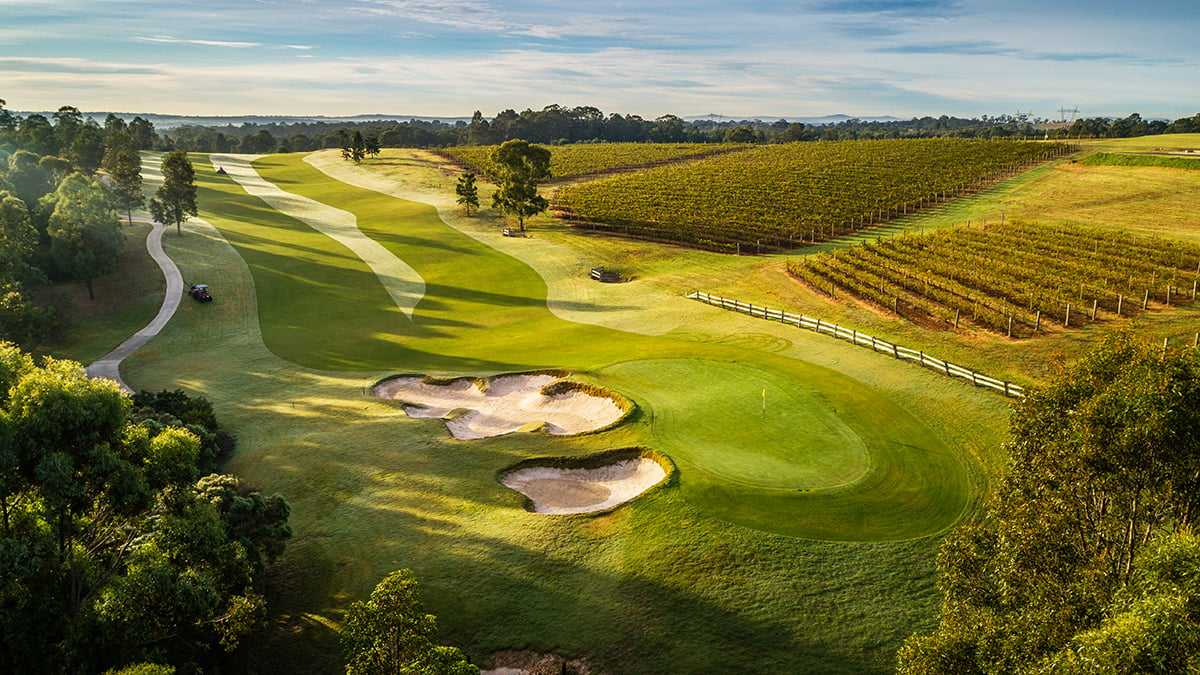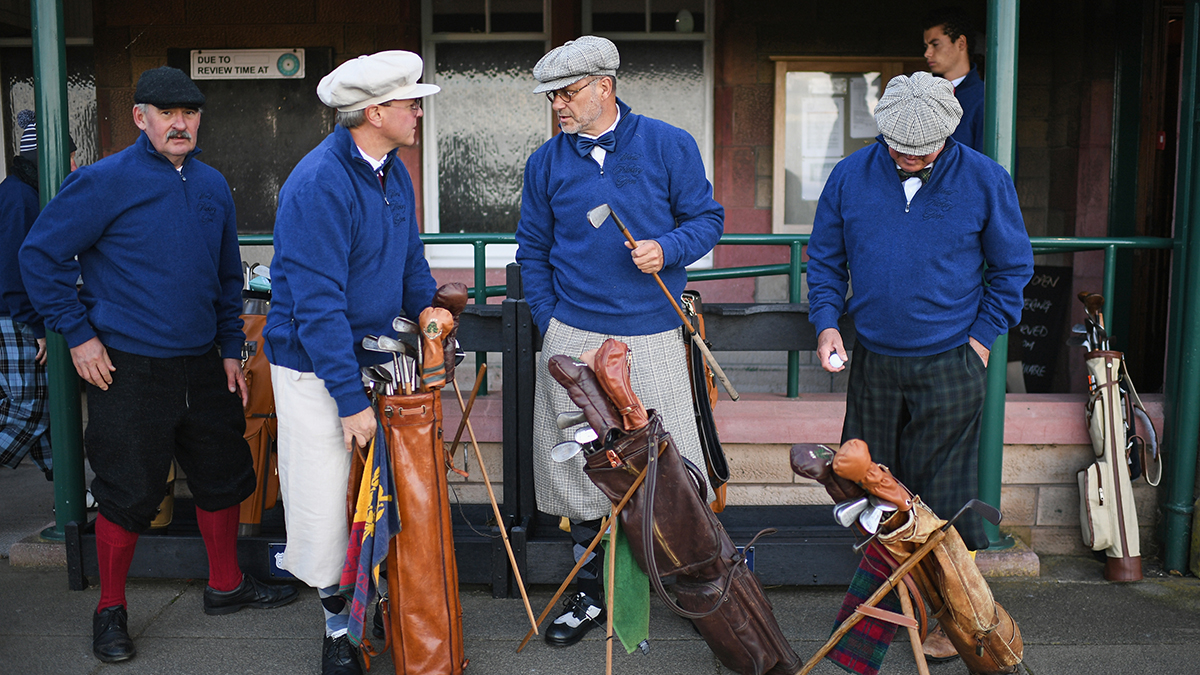Coastal Style: NSW North Coast – Australian Golf Digest

- by Admin
- November 26, 2024

Touring the portion of coastline between Sydney and the Queensland border reveals a region rich in diversity and golf surprises.
Exactly 812 kilometres separates Sydney from the Queensland border by road, which is a considerably longer stretch of coastline than the 523 kilometres spanning the New South Wales capital to the Victorian border. Which means roughly 36 percent more coast to explore.
That additional land is great news for golfers, as the region known as the NSW North Coast – which in truth is an accumulation of several coastal regions – is dotted with a litany of courses. The areas on the coastline between Sydney and Tweed Heads include the Central Coast, the Port Stephens region, the Barrington Coast, the Mid-North Coast, the Coffs Coast and then the area typically referred to as the Northern Rivers. Each location is different, separated by subtly varying climates and attractions, even if a glorious coastline is common to all.
For golfers, all these regions present nuanced differences in courses and climates, as the greater NSW North Coast flexes its impressive diversity throughout. Here’s a selection of the best places to play.
CENTRE OF ATTENTION
“You don’t need to go to Melbourne to play on a sandbelt,” enthuses Paul Riley, the new general manager at Magenta Shores Golf & Country Club, the Central Coast’s premier course. Just 80 minutes’ drive north of Sydney, the now 18-year-old layout built on a spit of land between Tuggerah Lake and the Pacific Ocean is indeed a brilliant adaptation of a sandy site. Veteran course architect Ross Watson augmented the oceanside land to create what he’s long referred to as his magnum opus. With spellbinding holes in view of the sea coupling with more secluded holes tucked among the native beach scrub – and featuring rippled and rumpled fairways greens throughout – there is a distinct look to the Magenta course that is not completely unfamiliar.
“Plonk yourself on the 13th tee and you’d swear you were in Melbourne,” Riley adds.
The club aspires to be the best NSW course outside Sydney, which it very nearly is already. Only Newcastle and Bonville stand in its way among the publicly accessible set, according to Australian Golf Digest’s most recent Top 100 Golf Courses ranking. The club also welcomed high attention – and praise – when it hosted the Women’s NSW Open in March.
Watson is set to return soon to advise on the bunkering, which is ready for a refresh after nearly two decades of golfer traffic and buffeting from the ever-present winds off the Pacific. Meanwhile, the implementation of a yellow-tee course will add a new dimension to a layout where playing from the appropriate set of tees is important for challenge and enjoyment.
Newcastle has long been an unheralded golf haven. The state’s second-largest city has produced a legion of tour pros through the years, many in the past few decades thanks to the input of the city’s greatest champion, the late Jack Newton. Though the junior foundation he formed nearly 40 years ago operates statewide and has tentacles across the country, there’s no question the juniors coming from his hometown held a soft spot in Newton’s heart.
The golf courses in what for so long was called the Steel City are also sneaky-good. From those in the Lake Macquarie region, north to the famed Newcastle links at Stockton and inland towards the wine-growing regions of the Hunter Valley, an impressive spread of golf can be found.
One suburban course with considerable history is Waratah Golf Club, which nurtured Nathan Green’s game as a junior and owns a 103-year history on its current site at Argenton. During that century, little has changed with the course that sidles up against Cockle Creek. Many of its greens are more than 40 years old. But that looks set to change, with Sydney-based course architect James Wilcher providing a redesign proposal for the club based on funding generated from the sale of a parcel of land on the edge of the course.
Wilcher’s revised layout would utilise most of the existing playing corridors, although with some variation. Of note will be a stunning double green complex horseshoeing around a pond with a rock-lined wall separating the greens from the water, and with the connected targets approached from different directions on the two holes. If all approvals are met and the redesign goes ahead, work will begin with the addition of a 19th hole to help facilitate the broader project. Once complete, Waratah will become so much more than ‘just another golf course’ in Newcastle.

As it nears its 20th birthday in 2025, Pacific Dunes at Medowie in the inland portion of Port Stephens continues to fortify its reputation for what can only be described as ‘fair difficulty’. The Wilcher design is well known for blending a heavily wooded front nine with an open and water-laden second side. Yet few demanding courses also get their ‘fair–difficult’ quotient right. Pacific Dunes asks a lot of golfers – its Slope rating is a robust 140 from the black tees – however at no point would you describe the examination as unfair. You just need to play damn good golf to score well.
Fortunately, it’s also a course where you can still have a blast carding 25 Stableford points, which is why play-and-stay groups keep coming back. Thanks to its location, Pacific Dunes is the most appealing course in a region that also includes Horizons, Nelson Bay Golf Club and more, as well as offering some exceptional off-course activities both on and off the expansive blue-water wonderland that is Port Stephens harbour. As far as golf hubs go, few in NSW rival the collection of courses in Port Stephens.
As someone who first played the course in its opening year and has returned perhaps a dozen times since, the whole place has flourished in its first 20 years. Pacific Dunes has proven to be a staple of the Medowie community, which has blossomed around the course and adjoining residential precinct.

TWO SLEEPERS AWAKEN
The term ‘sleeper course’ is perhaps overused in golf literature, however one place where the term certainly applies is Hawks Nest Golf Club. Yet the course in the cute beachside town of the same name on the northern side of Port Stephens is now awakening. The club’s Beachside Pro-am captured the NSW/ACT Tournament of the Year award at the 2023 PGA Golf Industry Awards, while the ever-improving golf course is drawing an increasing number of people off the Pacific Highway to play.
Those who’ve played Hawks Nest have long known its exceptional qualities. Gifted a gorgeous sandy base and dotted with towering gums that pair neatly with the low-level native coastal scrub, it’s the type of course where even a moderately sensible arrangement of tees and greens would yield a decent course. Yet the layout, which was initially designed by club members before Kel Nagle and Mike Cooper stepped in, is far more than that. Holes weave between open areas and treelined passages multiple times during a round, with each nine nudging the coastal strip at least once. The greens, meanwhile, are some of the most true along this part of the coast.
Craig Parry, whose design fingerprints are touching more parts of the NSW North Coast than many people realise, has helped the club improve the layout in recent years. Most striking to the eye are the revetted-face EcoBunkers, where sustainable, synthetic sods of ‘grass’ are layered to create the bunker walls. About three-quarters of the transformation is complete at Hawks Nest, and the look and playability aspects are excellent.
It’s part of the reason why the club sees a lot of repeat bookings – golfers who have discovered the course know what a great ‘find’ it is.
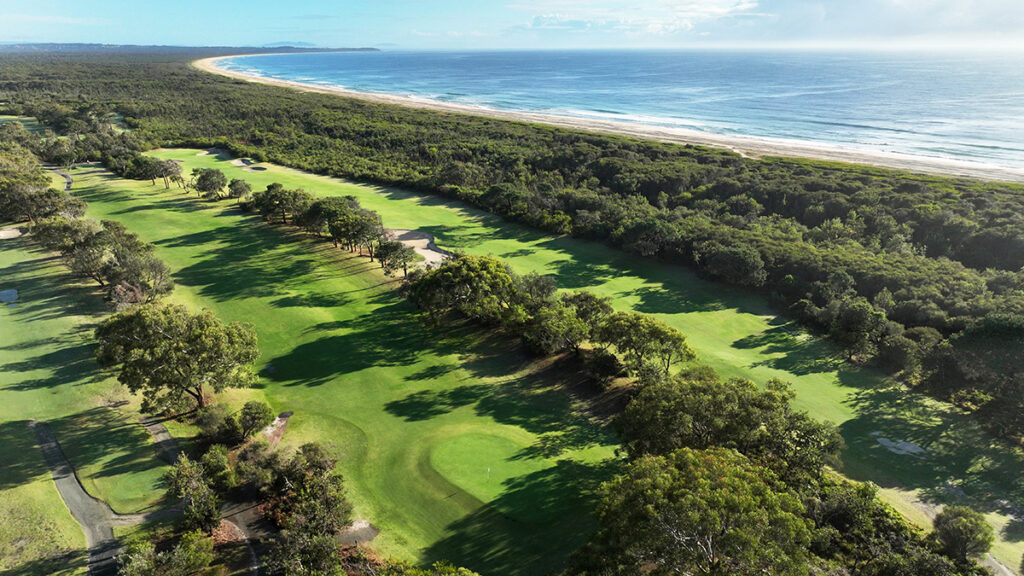
Venturing further north, the twin courses that comprise Forster Tuncurry Golf Club include the revitalised Tuncurry layout, which this year re-entered our Top 100 Golf Courses ranking for the first time since 2004. It was due reward for a club that used Parry’s expert eyes to make improvements to the course while clearing select vegetation that is prevalent across the site and had choked some of the playing corridors. No more, though, as much of the undergrowth is clear while still maintaining separation between fairways. The scenic and playability enhancements cannot be overstated, and the Tuncurry course ranks as perhaps the most improved NSW course of the past few years.
In helping renovate the layout, Parry was struck by the natural movement the site possesses – valleys, slopes and other undulations that are simply part of the land. “One of the really, really unique things about playing Tuncurry is you never get the same lie when you hit it in the same place,” he says of the way the varied contours impact play. “Only the best courses in the world have that.
“There are so many components to that golf course that make it interesting. If they had the same number of ground staff as a Melbourne Sandbelt club, it’d be top-10 in the country.”
The nearby Forster course is far more elementary in comparison, although that is exactly what some golfers are looking for. With more space to move and less of a penalty for wayward shots, the Forster course is far more user-friendly in the main. There is, however, a treelined section of the course on the back nine where arrow-straight play is called for. Together, the two courses make for a dynamic pairing.
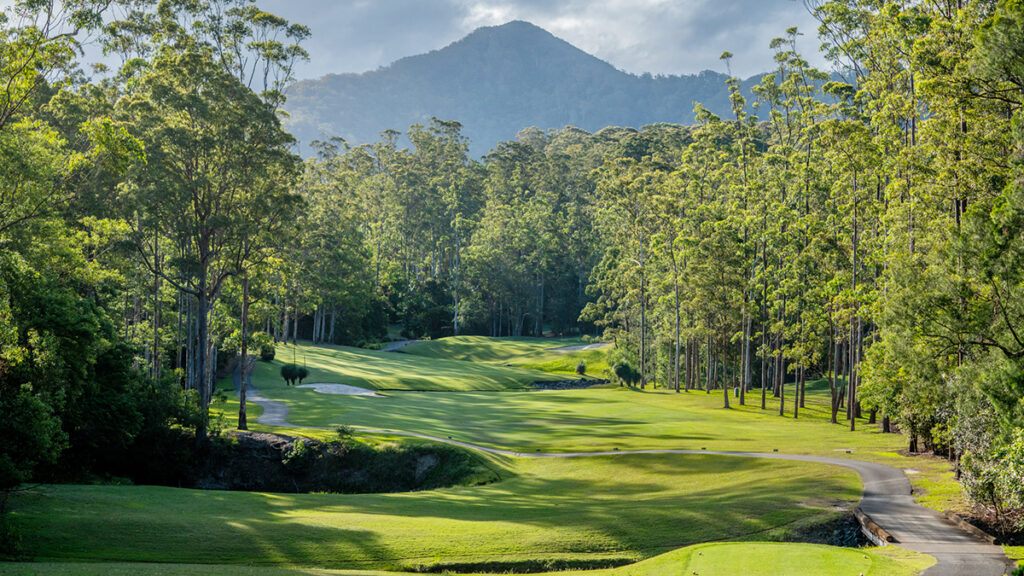
TROPICAL FEELS BECKON
Nambucca Heads Island Golf Club gives travelling golfers plenty of reasons to call in. For starters, the course is a rarity in that it occupies its own island and so offers a brand of riverside solitude unlike any other. It’s also handily positioned roughly halfway between Sydney and Brisbane, giving it midpoint appeal for anyone driving between the two cities.
It’s a small island, and Ross Watson worked hard to squeeze 18 holes into a 32-hectare parcel of land. But he did it well, transforming what was once a greyhound track into a compact layout that doesn’t feel claustrophobic. It’s short, tight and treelined, yet variety rules in the form of six par 3s that play in six different directions and an assortment of green shapes throughout. Those greens are bentgrass, too, making it one of the northernmost courses to boast the finer-leafed strain (if it doesn’t own that mantle outright).
Nambucca is also a club and course rich in resilience. Four times the course has flooded in the wild weather and rain events so far this decade, and each time the course staff have repelled Mother Nature to revive the layout. The most recent flood, in July 2023, must have felt like “Groundhog Day”, yet golfers were back playing – if only on shortened holes at first – in quick time.
The riverside location does come with a quirk. The Nambucca River is tidal and the causeway connecting the island to the town can ‘go under’, which has trapped a few unsuspecting golfers through the years. Members know to check the local tide charts as keenly as they do the weather forecast, but visitors can get caught out. However, there is another upside to being ‘trapped’ at the Nambucca course – the restaurant in the clubhouse boasts one of the best menus along the coast.
The plaudits for Bonville Golf Resort are many and varied. It began as an ambitious design project – undertaken to copy as many aspects of Augusta National as possible – in the early 1990s when course construction was arguably less cavalier than it is today. Plus, it’s always worth remembering that no Australian golf course of significance lies on the same latitude. Coffs Harbour’s location, wedged between the Great Dividing Range and the Pacific Ocean, makes for a unique tropical microclimate that keeps drawing golfers.
Even a recent operational shift to offering all-inclusive ‘stay, play and dine’ packages, amid limited social play, hasn’t slowed demand. People now take in all that Bonville has to offer rather than making it mere hit-and-run mission that includes golf alone. A sojourn that doesn’t require you to leave until it’s over – thanks to the accommodation beside the first fairway and an award-winning restaurant in the clubhouse – makes for a complete destination.
That model has been tweaked slightly since its introduction in 2020, as now one tee-time for non-staying golfers is available each day. But why wouldn’t you stick around and soak in the whole experience?
On the course, a recent change to the layout has seen the par-5 seventh hole altered via the filling in of the rock-lined drain that crossed the hole at its lowest point to create a more continuous fairway. The reasoning behind the modification is sound. Before the change, all four par 5s at Bonville featured a ‘break’ in the fairway and the lay-up at the seventh wasn’t always logical or fair. So now the hole welcomes a more aggressive second shot and reduces the chance of facing an awkward approach from a downhill lie to a narrow green set above fairway level.
Elsewhere are new bunkers beside the 10th and 11th greens, with one bunker becoming two at the latter, part of making a right-side miss less penal at the picturesque par 3. And throughout is a higher focus on the stunning gardens that adorn many tees. After more than 30 years, it’s all about the little things at Bonville, which is part of what sustains its broad appeal.

One standout course in the border region is Ocean Shores Country Club, a course best known for two things: its combination of six par 3s, 4s and 5s, and as an early pioneer of golf-course living. A design union between Bruce Devlin and Robert von Hagge (who also designed the late-20th century version of The Lakes), Ocean Shores ranked among the top 50 courses in Australia for much of the 1980s and 1990s and these days owns a place in what we term ‘The Next 100’, those courses ranked 101st to 200th.
Situated between the Brunswick River and Marshalls Creek, the course is mostly flat, save for the holes that leave or return to the clubhouse. Which raises the question: how do you add interest and strategy to flat terrain? The answer at Ocean Shores is by utilising angles and carries. There are several daring lines to be taken from tees and into greens across water and bunkers – including from the opening hole. The first is a generous, 488-metre par 5 but one where a central fairway bunker and ominous greenside lake raise the heart rate from the outset.
Two of the best holes are par 4s on the inward nine. The 394-metre 10th starts from a tee so high that you can’t see the fairway below, although the alignment of the trees on each edge signals the dogleg-right shape of the hole. Cutting the corner isn’t necessarily required, as the contour of the fairway helps feed balls to the right towards a green ringed by four bunkers. Later, the 368-metre 13th twists left against a creek in a secluded pocket of the course and calls for a controlled right-to-left tee shot before approaching a small green set at an angle.
Cleverly, the six-holes-of-each-par routing is also laid out so that no two consecutive holes share the same par. Variety is king at Ocean Shores – a recurring theme throughout the golf courses along the NSW North Coast.
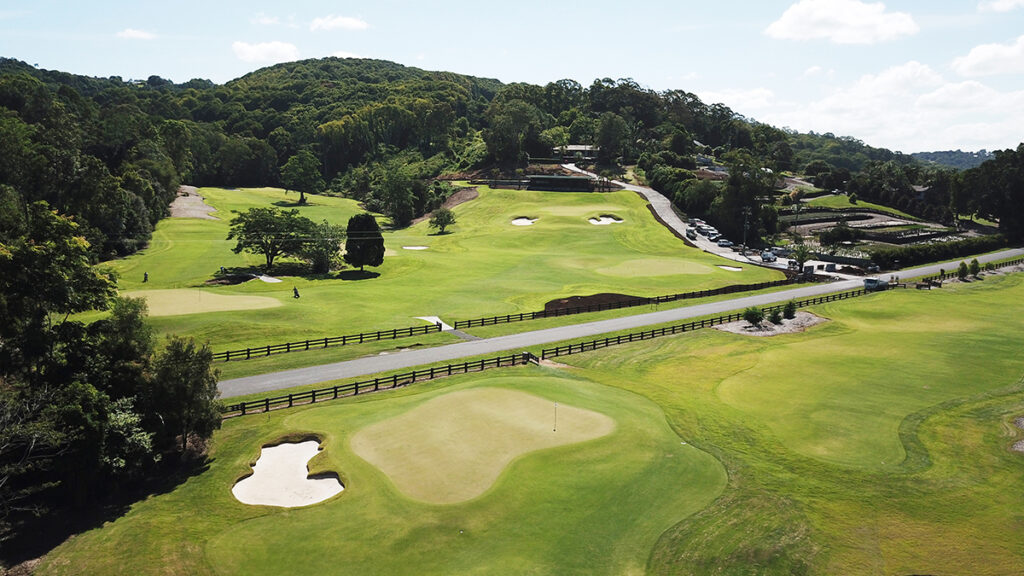
Even Teven
You don’t go on a golf holiday for nine-hole courses. Or so used to be the prevailing attitude among travelling golfers. However, one nine-holer on the NSW North Coast will change that opinion for anyone still clinging to it.
Teven Valley Golf Course has already been described as the best nine-hole course in Australia, and while it has legitimate rivals to such a crown, it’s definitely in the conversation. A short drive inland from Ballina and Lennox Head, the Teven Valley course is split into two sections, with holes one, two, three and nine on a steeper part of the property and the rest occupying flatter ground across a road. That stretch sits flush against a wall of ‘rainforesty’ vegetation and beside a babbling creek where platypuses are sometimes spotted.
The layout is short, fun and is the lone Australian course to be covered from tee to green in Sir Grange Zoysia, a grass that flourishes in semi-tropical climates. Slick TifEagle greens complete the agronomic picture.
The dynamic combination of Craig Parry, who redesigned the nine holes, course owner Curt Zuber and superintendent Paul Gumbleton keeps achieving results. In June, Gumbleton was awarded the Australian Sports Turf Managers Association’s prestigious Claude Crockford Sustainability and Environment Award.
Parry has packed oodles of strategy into the par-31 course, which measures 1,705 metres at its longest. Several par 4s are driveable, yet the raised putting surfaces ask for precise pitching while a meandering creek guards more than a few greens. One piece of advice: don’t come up short at the uphill, par-3 ninth hole. The sight of your ball freewheeling it back towards the tee down the steep hillside fronting the green is even more frustrating when you consider the friendly bank behind the target is the perfect place to work a ball onto the green.
The Latest News
-
November 26, 2024Indian apparel exporters expecting more business from Australia | Trade Data News Bangladesh
-
November 26, 2024News You May Have Missed: December 2024 – Australian Golf Digest
-
November 26, 2024The numbers leading up to Australia’s Perth capitulation
-
November 26, 2024‘Enshittification’: Australian Dictionary’s Word Of The Year, What It Means
-
November 26, 2024Top 100 Spotlight: The Vintage Golf Club – Australian Golf Digest

